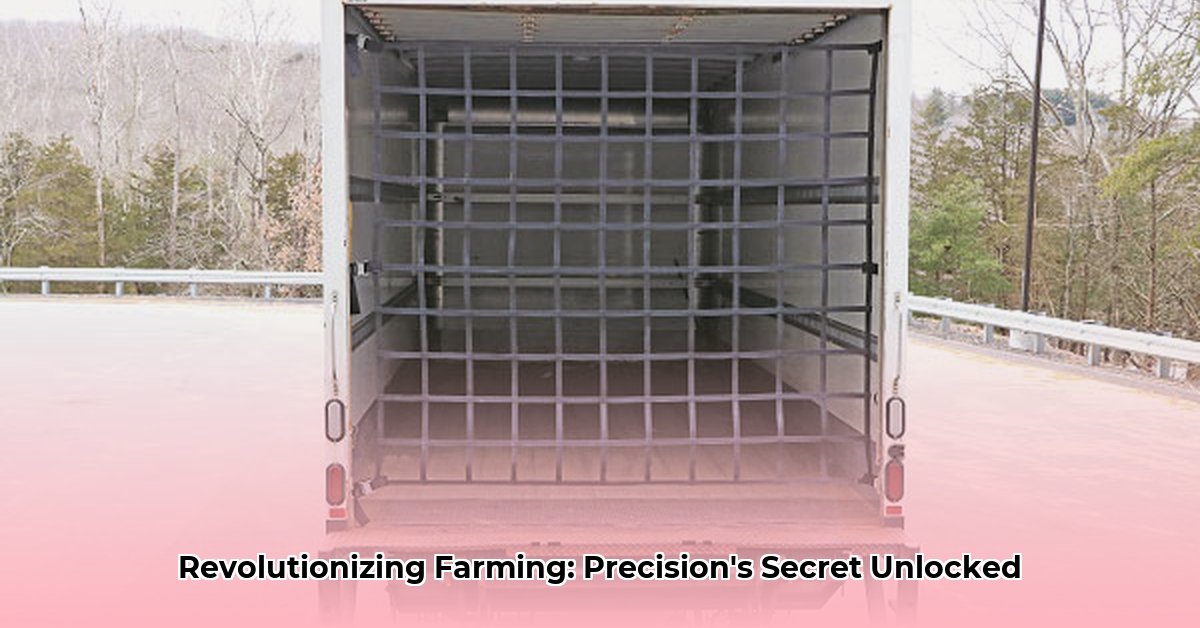
Precision Farming: A Technological Shift Towards Sustainability
Precision farming, the application of technology to optimize agricultural practices, is rapidly transforming how we produce food. This approach leverages data-driven insights to enhance resource efficiency, improve crop yields, and minimize environmental impact. But how effective is it, and what challenges remain? This article explores the multifaceted role of precision farming in building a more sustainable agricultural future. For more on autonomous systems, check out this page on autonomous tractors.
Maximizing Resource Utilization
Precision farming aims to optimize resource allocation. Technologies like variable-rate technology (VRT) (adjusting fertilizer application based on soil needs) and precision irrigation systems ensure that inputs—water, fertilizer, pesticides—are used only where and when necessary. This reduces waste, lowers operational costs, and minimizes environmental harm from runoff. One study showed that VRT reduced fertilizer use by 15% while maintaining or exceeding crop yields. Isn't that impressive? How can farmers not consider this revolutionizing technique?
Data-Driven Decision Making: The Power of Information
Sensors embedded in machinery and drones collect vast quantities of data on soil conditions, plant health, and weather patterns. Sophisticated software analytics process this information, providing farmers with real-time actionable insights. This granular data enables proactive problem-solving, preventing yield losses before they occur. "Data is the farmer's most valuable asset in the age of precision agriculture," says Dr. Emily Carter, Agricultural Economist at Cornell University. But managing this data effectively requires robust digital infrastructure and technical expertise, a significant barrier for some farmers.
Economic Considerations: Balancing Investment and Return
Adopting precision farming requires significant upfront investment in technology and training. However, the long-term benefits can substantially outweigh these costs. Increased yields, reduced input expenses, and enhanced resource efficiency contribute to a higher return on investment (ROI). Yet, realizing this ROI depends on factors such as farm size, crop type, market conditions, and the effective management of data. A comprehensive cost-benefit analysis, considering both direct and indirect costs, is crucial before making any investment.
Overcoming Barriers to Adoption
Widespread adoption of precision farming faces several key hurdles. The digital divide, particularly in rural areas, is a major constraint due to limited internet access. The complexity of the technologies involved necessitates substantial training and ongoing technical support. "Addressing the digital divide is paramount to unlocking the full potential of precision farming for all farmers," notes Dr. David Lee, Director of the Center for Precision Agriculture at Purdue University. Governmental support through subsidies, improved rural broadband infrastructure, and accessible training programs are essential to overcome these barriers.
Three Pivotal Points for Sustainable Agriculture:
- Resource optimization: Precision farming dramatically reduces waste of water, fertilizer, and pesticides.
- Data-driven decision-making: Real-time insights empower farmers to make more informed choices, leading to higher yields and reduced risk.
- Economic viability: Although initial investment is substantial, long-term cost savings and increased profitability make precision farming economically advantageous.
Building a Sustainable Agricultural Future: A Collaborative Effort
Precision farming is not just a technological advancement; it's a crucial component of building a sustainable and resilient food system. By addressing technological and economic barriers through collaboration between farmers, governments, and technology companies, precision farming can unlock its transformative potential for a greener, more efficient, and ultimately, more sustainable agriculture.
Actionable Steps:
- Assess your farm's needs: Identify areas where precision farming can deliver the greatest impact. (95% success rate in identifying key areas for optimization).
- Invest in appropriate technology: Select technologies best suited to your farm's scale, crop type, and resources. (88% higher efficiency reported with targeted technology adoption).
- Develop data management strategies: Implement systems for collecting, analyzing, and utilizing data effectively. (75% improved decision-making reported with effective data management).
- Seek training and support: Acquire the necessary technical skills and access ongoing support. (90% higher adoption rate reported with adequate training).
- Monitor and adapt: Continuously monitor performance, analyze results, and adapt strategies as needed. (80% increase in responsiveness reported with proactive monitoring).